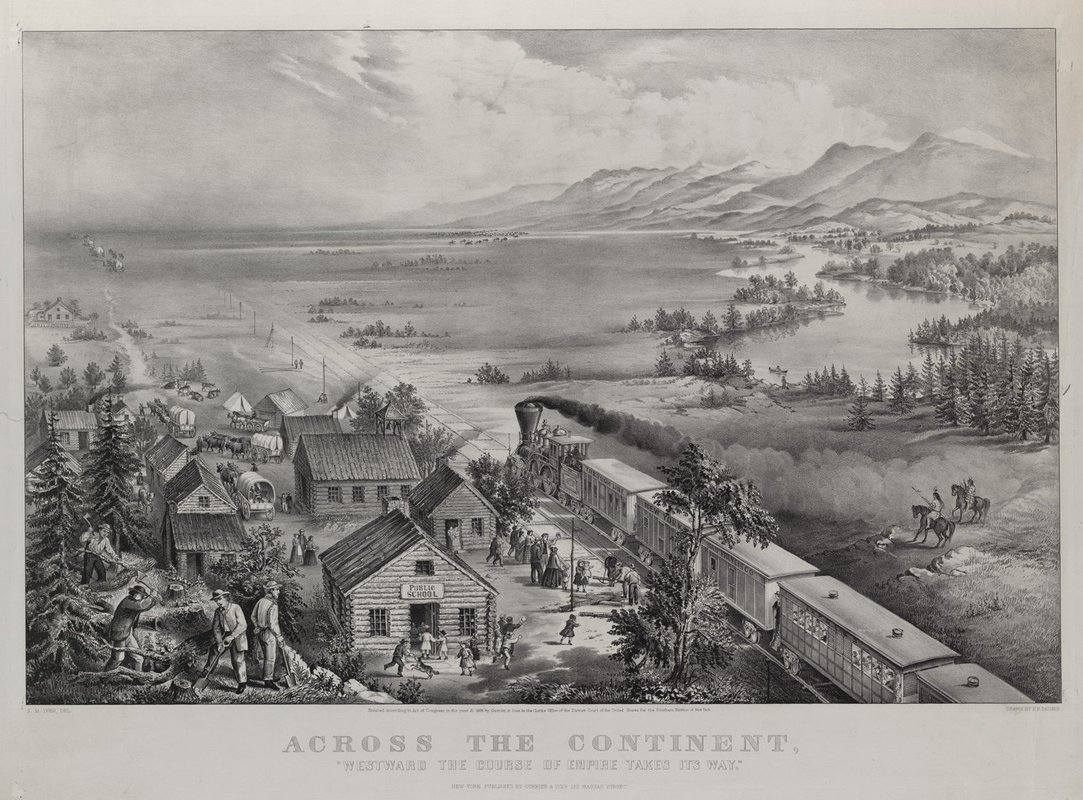Indian Wars: the near-extinction of the American bison was a deliberate plan by the US Army to starve Native Americans into submission. One colonel told a hunter who felt guilty shooting 30 bulls in one trip, "Kill every buffalo you can! Every buffalo dead is an Indian gone.”
SAQ Strategy: ICE: Introduce, Cite, and Explain Your Evidence
PRIMARY SOURCE READINGSUnit 6 OutlineFriday December 1st
Unit 5 HWP Due KP5 Exam Day 1 Tuesday December 5th Begin Key Period Six- Gilded Age Problems to Progressivism Pass out Papers and explain KP6 Begin 6.1 Lecture Moving West Day 2 Wednesday December 6th Finish 6.1 Lecture Moving West Day 3 Friday December 8th SUB Begin 6.2 Lecture (Flipped) Day 4 Monday 12/11 SUB Common Day Healthy Kids Survey 2nd & 4th Period Day 5 Tuesday 12/12 Period 1 and Period 4 Final Exams Assign KP6 Persons Projects Wednesday 12/13 Period 2 and Period 5 Final Exams Assign KP6 Persons Projects Thursday 12/14 Period 3 and Period 6 Final Exams No School Friday 12/15 Unit 6 Outline/Agenda Winter Break 12/18-1/7 ----------------------------------------------------------------------------------------- Over Break: Work on your HW Packet. Gilded Age --> Progressivism Tuesday January 8th Assign KP6 Historical Persons Projects due 2/1 6.2 Political Paralysis & 6.3 Immigration & Urbanization (6.4 and 6.5 FLIPPED LECTURES) Wednesday January 9th Horses Discussion (6.4 and 6.5 FLIPPED LECTURES) Friday January 11th Finish FLIPPED 6.4 The Gilded Age Lecture Important Dates Review Begin Reading Cross of Gold Speech (HIPPO1) Flipped Lecture 6.5 Working in the U.S. Monday January 15th No School MLK Day Tuesday January 16th Special Common Day Finish Reading Cross of Gold Speech (HIPPO1) Begin 6.5 Working in the U.S. Wednesday January 17th Finish 6.5 Working in the U.S. Friday January 19th Wizard of Oz Notes (2) SAQ 6.6 Populist Movement Lecture Begin 6.7 Economic and Political Progress Tuesday January 23rd Finish 6.7 Economic & Political Progress Upton Sinclair Reading- (HIPPO #10) Triangle Shirtwaist Factory Fire Video Begin 6.8 Social Progressivism Quiz 6.1 Deadline: 11:44pm, January 29th Wednesday January 24th HW/Project Free time. Friday January 26th Review Game- Jeopardy Review/Project Time afterwards Quiz 6.1 Deadline: 11:44pm, January 29th Tuesday January 30th Rally Schedule Monday/Tuesday KP6 Exam; & LEQ Intro Paragraph Explain KP7. Pass out papers Wednesday January 31st KP6 Persons Video Projects Due Friday February 2nd KP5 DBQ To come soon.... Begin KP7 Go to the KP7 Page for the next Unit. December Gilded age LecturesJanuary Progress LecturesDBQ Grading Lesson:
https://www.smore.com/tyvjs-dbq-grading-activity kp6 exam re-take2nd period
4th period
important dates review1865
1877 1898 1917 1929 1945 1968 1989 2001 2016 |
UNIT 6 HW Packet1. 6.1-6.9 Guided Lecture Notes 100 points
2. KP6 Quicksheet 300 points 3. KP6 Timeline 50 points 4. W. of Oz Handout & Filled out 50 points 5. HIPPOS (Ranked, & Filled Out) (1-14) 140 points 640 points (If you don't have at least three sentences for each of the HIPPOS you will not receive full credit). From here on out. Historical Persons Presentation 100 points (Project) Due 2/1/2023 Quizizz 6.1
|
6.1 Guided Lecture Notes
6.2 Guided Lecture Notes
6.3 Guided Lecture Notes
New Immigration Guided Lecture Notes
Tammany Hall and "Boss" Tweed Guided Lecture Notes
The Election of 1896 Guided Lecture Notes
Pools Integration and Interlocking Directorates
Plessy v Ferguson Guided Lecture Notes
The Frontier Guided Lecture Notes
Native Americans Guided Lecture Notes
Go Over DBQ Topic
Gilder Lerhman Essay: http://ap.gilderlehrman.org/essays/entrepreneurs-and-bankers-evolution-corporate-empires?period=6
Gilder Lerhman Essay: http://ap.gilderlehrman.org/essays/entrepreneurs-and-bankers-evolution-corporate-empires?period=6
